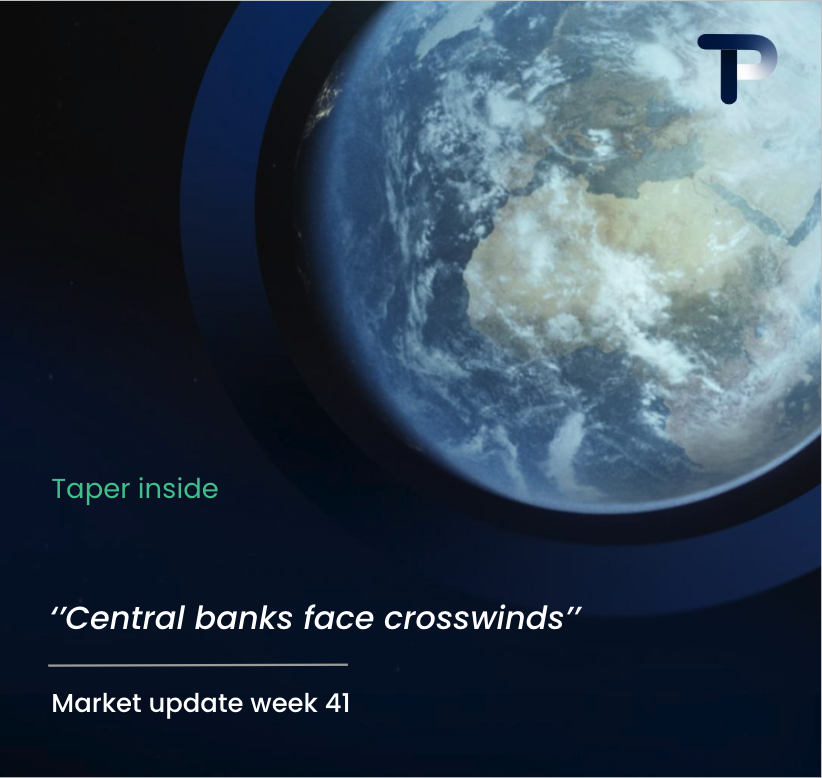You should use trade finance for currency exchange when you need to mitigate risks in international transactions, manage cash flow effectively, and secure competitive exchange rates whilst maintaining regulatory compliance. Trade finance works particularly well for businesses handling large transaction volumes, operating in high-risk markets, or requiring structured payment terms with international partners.
Understanding trade finance for currency exchange
Trade finance represents a specialised approach to currency exchange that goes beyond simple foreign exchange transactions. Unlike traditional currency exchange methods that focus purely on converting one currency to another, trade finance integrates currency conversion with risk management tools and structured payment mechanisms.
This approach combines international payments with financial instruments such as letters of credit, documentary collections, and trade credit facilities. The key difference lies in how trade finance addresses the complete transaction lifecycle, from initial agreement through to final settlement, whilst providing protection against various commercial and political risks.
Businesses typically consider trade finance for currency exchange when they face complex international trading scenarios. These situations often involve unfamiliar counterparties, volatile markets, or substantial transaction values where traditional foreign exchange services fall short of providing adequate protection and flexibility.
What is trade finance and how does it work for currency exchange?
Trade finance operates through structured financial instruments that facilitate secure currency exchange whilst mitigating transaction risks. The most common mechanisms include letters of credit, documentary collections, and trade credit insurance, each serving different aspects of international commerce.
Letters of credit function as payment guarantees issued by banks, ensuring that currency exchange occurs only when specific conditions are met. This mechanism protects both parties in international transactions whilst providing predetermined exchange rates and payment terms. The bank essentially acts as an intermediary, holding funds in one currency and releasing them in the required currency upon document compliance.
Documentary collections streamline currency exchange by using banks as collection agents. The exporter ships goods and submits documents to their bank, which forwards them to the importer’s bank. Currency conversion happens automatically when the importer accepts the documents, providing a structured approach to foreign exchange that reduces counterparty risk.
Trade credit insurance adds another layer of protection by covering currency exchange transactions against commercial and political risks. This instrument proves particularly valuable when dealing with emerging markets or unstable currencies, ensuring that businesses can complete foreign exchange transactions even in challenging circumstances.
When should businesses consider trade finance for foreign exchange needs?
Large transaction volumes represent the primary scenario where trade finance becomes advantageous for currency exchange. When dealing with substantial amounts, the cost savings from competitive exchange rates and reduced processing fees often outweigh the additional complexity of trade finance instruments.
High-risk markets create another compelling case for trade finance currency solutions. Countries with political instability, currency volatility, or weak legal frameworks benefit from the additional protection that trade finance provides. The structured approach helps businesses navigate challenging regulatory environments whilst securing favourable exchange rates.
Cash flow management needs frequently drive businesses towards trade finance solutions. Extended payment terms, seasonal fluctuations, or working capital constraints make traditional spot currency exchange impractical. Trade finance offers flexible payment structures that align currency conversion with business cash flow cycles.
Regulatory compliance requirements also influence timing decisions. Industries with strict documentation needs, such as pharmaceuticals or aerospace, find trade finance instruments naturally align with their compliance obligations whilst facilitating efficient currency exchange.
What are the key benefits of using trade finance for currency exchange?
Risk mitigation stands as the primary advantage of trade finance currency solutions. Unlike traditional foreign exchange, trade finance instruments provide protection against counterparty default, political risks, and currency volatility through structured payment mechanisms and insurance coverage.
Improved cash flow management emerges through flexible payment terms and financing options. Businesses can secure favourable exchange rates whilst deferring actual currency conversion until goods are delivered or services completed. This approach reduces working capital requirements and improves financial planning capabilities.
Competitive exchange rates become accessible through trade finance relationships. Financial institutions often provide preferential pricing for structured transactions, particularly when combined with other banking services. The longer-term nature of trade finance relationships also enables better rate negotiations.
Enhanced credibility with international partners develops through the use of recognised trade finance instruments. Letters of credit and documentary collections signal financial stability and professional approach to international business, often opening doors to new markets and partnerships.
| Trade Finance Benefits | Traditional FX | Trade Finance FX |
|---|---|---|
| Risk Protection | Limited | Comprehensive |
| Payment Terms | Immediate | Flexible |
| Documentation | Basic | Structured |
| Counterparty Protection | None | Bank guaranteed |
How do you choose the right trade financing solution for currency exchange?
Transaction size and frequency form the foundation of your decision-making framework. Smaller, regular transactions typically suit traditional foreign exchange methods, whilst larger, less frequent transactions benefit from trade finance structures. The break-even point usually occurs around transactions exceeding £50,000 or equivalent.
Counterparty risk assessment determines the level of protection required. New trading relationships, businesses in politically unstable regions, or companies with limited credit history warrant stronger trade finance instruments. Established partners with proven track records may need less structured approaches.
Timeline requirements influence instrument selection significantly. Immediate currency needs suit spot transactions, whilst future requirements benefit from forward contracts or letters of credit. Consider your business cycle, seasonal patterns, and cash flow timing when evaluating options.
Cost considerations extend beyond exchange rates to include facility fees, document processing charges, and insurance premiums. Calculate total transaction costs rather than focusing solely on exchange rate margins. Factor in the value of risk reduction and improved cash flow when assessing overall benefits.
The regulatory environment in both origin and destination countries affects instrument choice. Some jurisdictions favour specific trade finance mechanisms or impose restrictions on currency movements. Ensure your chosen solution complies with all applicable regulations and reporting requirements.
Key takeaways for leveraging trade finance in currency exchange
Strategic timing proves crucial when implementing trade finance currency solutions. Begin evaluation during stable market conditions rather than waiting for crisis situations. This approach allows proper due diligence and relationship building with financial partners.
Risk assessment should encompass commercial, political, and currency risks specific to your trading relationships. Document these risks clearly and match them to appropriate trade finance instruments. Regular reviews ensure your approach remains aligned with changing market conditions.
Implementation best practices include starting with smaller transactions to build experience and relationships. Gradually increase complexity as your team develops expertise with trade finance procedures and documentation requirements.
Cost-benefit analysis must consider both direct financial impact and operational efficiency gains. Factor in reduced administrative burden, improved supplier relationships, and enhanced market access when evaluating return on investment.
For businesses seeking comprehensive international payment solutions that combine competitive exchange rates with flexible trade finance options, we at Taper provide tailored approaches that address the unique challenges of cross-border commerce whilst maintaining the personal service that growing businesses require.
Frequently Asked Questions
How long does it typically take to set up trade finance facilities for currency exchange?
Setting up trade finance facilities usually takes 2-4 weeks for established businesses with good credit history. The process involves credit assessment, documentation review, and facility agreement negotiation. New businesses or those in high-risk sectors may require 6-8 weeks, as banks need additional due diligence and may request collateral or guarantees.
What documentation is required to access trade finance currency exchange services?
Essential documents include audited financial statements (typically 2-3 years), trade references, business registration certificates, and details of your international trading activities. You'll also need specific transaction documents like commercial invoices, bills of lading, and insurance certificates for each trade finance instrument used.
Can small businesses benefit from trade finance currency exchange, or is it only for large corporations?
Small businesses can definitely benefit from trade finance, though the minimum transaction thresholds vary by provider. Many banks offer simplified trade finance products for SMEs with transactions as low as £10,000. The key is finding providers who specialise in smaller business needs and offer proportionate documentation requirements.
What happens if exchange rates move unfavorably after securing a trade finance facility?
Most trade finance instruments allow you to lock in exchange rates through forward contracts or rate guarantees at the time of facility setup. If you haven't secured rates and they move unfavorably, you may face higher costs, but the structured payment terms often provide flexibility to time your currency conversion more strategically than spot transactions.
How do trade finance currency solutions compare cost-wise to traditional FX brokers?
Trade finance typically involves higher upfront costs due to facility fees, documentation charges, and insurance premiums. However, for larger transactions (£50,000+), the competitive exchange rates and risk protection often result in better overall value. Calculate total cost of ownership including risk mitigation benefits rather than just comparing exchange rate margins.
What are the most common mistakes businesses make when implementing trade finance for currency exchange?
The biggest mistakes include underestimating documentation requirements, failing to build relationships with trade finance providers before urgent needs arise, and focusing solely on exchange rates while ignoring facility fees. Many businesses also choose overly complex instruments for simple transactions or insufficient protection for high-risk scenarios.
Can trade finance currency exchange help with compliance in heavily regulated industries?
Yes, trade finance instruments naturally align with regulatory compliance requirements through their structured documentation and audit trails. Industries like pharmaceuticals, aerospace, and financial services find that letters of credit and documentary collections provide the paper trail and verification processes required by regulators, while simultaneously facilitating efficient currency exchange.
Hi there! 👋 I see you're reading about multi-currency IBAN accounts for supply chain payments. Smart choice - these accounts can save businesses 2-4% on every international transaction!
What best describes your current situation with international supplier payments?
Which of these challenges are you currently facing with international payments? (Select all that apply)
What's driving your interest in multi-currency payment solutions? Tell us about your business goals or challenges.
Great! To help us understand your specific needs better, could you share more details about your international payment volume or any particular requirements?
Perfect! Let's connect you with one of our international payments specialists who can show you exactly how Taper's multi-currency IBAN accounts can save you money and streamline your supply chain payments.



